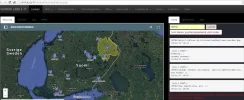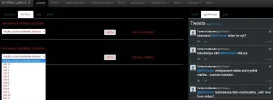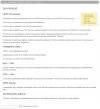Vapaaehtoiset rakensivat kaikessa hiljaisuudessa varajärjestelmän viranomaisten verkolle – ”Kustannustehokas keino turvata pelastustoiminnan johtaminen poikkeusoloissa”
Varve-varaverkkoa testattiin häiriötilanteen aikana, ja sen operaattorit olivat jatkuvassa valmiudessa.
POHJOIS-KARJALASSA on kaikessa hiljaisuudessa rakennettu varajärjestelmä viranomaisten viestinnässä käytettävälle Virve-verkolle.
Radioamatöörien ja pelastuslaitoksen rakentamaa koko maakunnan kattavaa verkkoa kutsutaan Varveksi. Se on lyhenne sanasta varaverkko.
Vuonna 2002 käyttöön otettu, kaikkien viranomaisten yhteiskäytössä oleva Virve-verkko osoitti haavoittuvuutensa vuodenvaihteen sähkökatkojen aikana,
kun useita tukiasemia pimeni yhtä aikaa.
”Häiriöt eivät vielä haitanneet johtamista, eli paloasemat saivat yhteyden toisiinsa. Mutta kun lähdettiin maastoon, tuli ongelmia”, kertoo Pohjois-Karjalan pelastuslaitoksen valmiussuunnittelija
Ville Leinonen.
Varve-varaverkkoa testattiin häiriötilanteen aikana, ja sen operaattorit olivat jatkuvassa valmiudessa.
”Ei ollut kaukana, että sitä olisi tarvittu käytännössä”, arvioi
Pertti Karttunen Pohjois-Karjalan radiokerhosta.
IDEA Varve-verkosta syntyi, kun radioamatöörit rakensivat tilapäisiä viestintäverkkoja Radioamatööriliiton Turva-harjoituksia ja Puolustusvoimien sotaharjoituksia varten.
”Heräsi ajatus, että tukiasemat voisivat olla kiinteitä ja pysyviä”, Karttunen selittää.
Pelastuslaitos kiinnostui ideasta vuonna 2013. ”Oli havaittu, että Virve-verkossa voi olla häiriöitä”, Leinonen perustelee. Hän korostaa, että varaverkko on lisätyökalu.
”Emme ole luopumassa Virvestä. Haluamme edelleen kehittää myös sen häiriönsietokykyä.”
VARVE koostuu itse asiassa kolmesta eri verkosta. Puheverkko välittää puhetta ja sanomaverkko lyhyitä, tekstiviestin kaltaisia sanomia. Nämä verkot ovat jo toiminnassa. Rakenteilla oleva dataverkko pystyy tulevaisuudessa välittämään jopa videota reaaliaikaisesti.
Varve-verkon varmuus perustuu matalaan radiotaajuuteen, jolla on paljon Virve-verkkoa pidempi kantama. Tukiasemia koko maakunnassa on ainoastaan neljä. Niillä saadaan peittoa jopa naapurimaakuntien puolelle – Sotkamosta Savonlinnaan ja Kuopiosta itärajalle.
Tukiasemien sähköntarve on pienempi kuin kännykkämastoissa, joita myös Virve-verkko käyttää. Varavirta riittää sähkökatkon aikana kahdesta kolmeen vuorokautta, ja tyhjentyneet akut on helppo vaihtaa täysiin. Myös aurinkopaneelien ja tuuligeneraattorien käyttöä virtalähteenä tutkitaan.
VERKKOA operoivat radioamatöörit työskentelevät vapaaehtoispohjalta. Vastapalveluksena pelastuslaitoksen rakentamat tukiasemat ovat myös heidän harrastustoimintansa käytössä.
”Tämä on erittäin kustannustehokas keino turvata pelastustoiminnan johtaminen poikkeusoloissa”, Leinonen toteaa.
Maakunnallisen verkon ylläpito maksaa vain muutamia tuhansia euroja vuodessa. Sen rakentamiskulutkin ovat olleet vain 3 000–4 000 euroa vuodessa.
Leinonen muistuttaa, että vastaavaa VHF-radioteknologiaa oli pelastuslaitoksilla käytössä ennen Virve-verkon perustamista.
”Jälkikäteen ajatellen VHF olisi kannattanut säilyttää Virven rinnalla koko ajan.”
ALOITE varaverkon rakentamiseen ei tullut ylhäältäpäin, vaan koko verkko on ideoitu ja toteutettu ruohonjuuritasolla pelastuslaitoksen ja radioamatöörien kesken. Nyt Varve kiinnostaa muissakin maakunnissa.
”Etelä- ja Pohjois-Savossa kehitetään samantapaista verkkoa. Sieltä on käyty vierailemassa Varve-verkon harjoituksissa. Sielläkin radioamatöörit ovat mukana”, kertoo Pohjois-Karjalan radiokerhon aktiivi
Antti Tiilikainen. Myös Pohjois-Suomessa on kiinnostuttu Varvesta.
Sisäministeriö pitää hanketta positiivisena. ”On hyvä, että on varajärjestelmiä ja vapaaehtoisuutta pystytään hyödyntämään”, toteaa ylitarkastaja
Alpo Nikula.
Ministeriö ei kuitenkaan aio aktiivisesti edistää Varven laajentamista valtakunnalliseksi.
”Jos tämä olisi valtakunnallinen, kaikkialta pitäisi löytyä vapaaehtoisia. Myös jatkuvuus vapaaehtoisuuteen perustuvassa järjestelmässä voi olla ongelma. Löytyykö verkolle uusia ylläpitäjiä nykyisten jälkeen”, Nikula pohtii.
Ylitarkastaja muistuttaa, että Virve-verkko on edelleen ensisijainen viestintäväline ja sen varmuutta kehitetään.
”Virven häiriöistä on julkisuudessa voinut saada liian dramaattisen kuvan.”
Fakta
Radioamatööreistä apua kriiseissä
Radioamatöörit käyttävät toiminnassaan siihen varattuja radiotaajuuksia. Toiminta on luvanvaraista.
Yleensä harrastukseen liittyy kommunikatiivisuus, eli amatöörit ottavat toisiinsa yhteyttä radiolaitteiden avulla. Tämä erottaa heidät DX-kuuntelijoista, jotka bongaavat ja kuuntelevat radiolähetyksiä.
Radioamatööritoimintaan liittyy myös laitteiden ja mastojen rakentelu. Suomessa on noin 6 000 radioamatööriä.
Radioamatöörien viestintävälineitä on hyödynnetty eri puolilla maailmaa esimerkiksi myrskyjen ja maanjäristysten aiheuttamissa kriiseissä.




